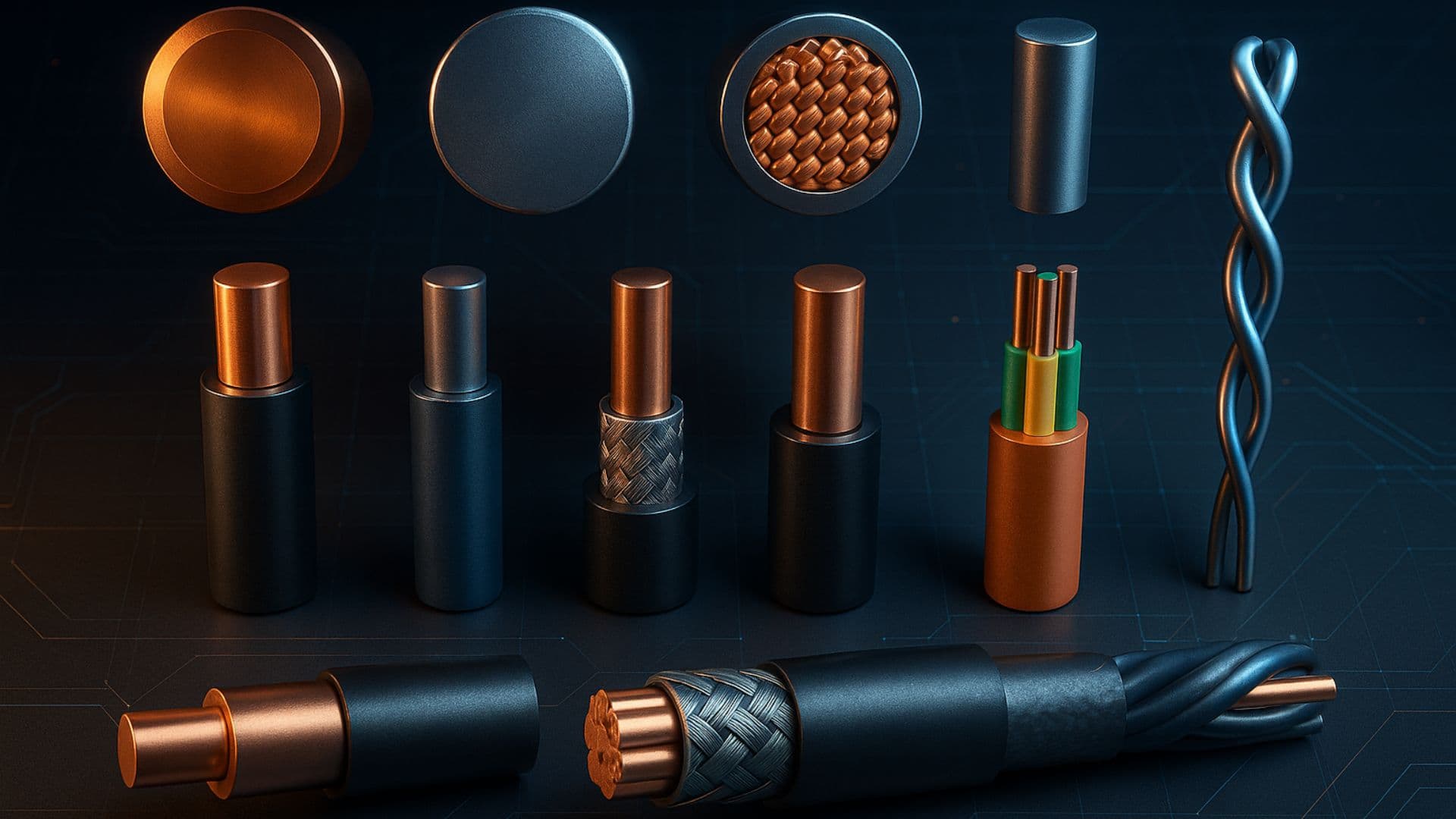Types of Conductors in Electricity
Discover the different types of electrical conductors, their definition, functions, common causes of failure, and how to keep them in optimal condition to en…

In the world of electricity, conductors play a fundamental role in the efficient and safe transmission of electrical energy. The types of electrical conductors vary according to their material, shape, and specific use, allowing them to adapt to different needs in residential, commercial, or industrial installations. Understanding the characteristics and advantages of each type allows for optimized performance and the prevention of common electrical problems.
A suitable conductor not only facilitates the flow of electrical current with minimal loss, but also enhances system safety by preventing short circuits and overheating. For example, a copper conductor offers high conductivity and mechanical strength, making it ideal for most household electrical applications. Understanding these differences is key to choosing the right conductor and improving the durability of any installation.
Definition and function of conductors in electricity
Electrical conductors are materials that allow the flow of electric current through them thanks to the mobility of their free electrons. Their main function is to transport electrical energy from the source to the devices or equipment that require it. As a writer with experience in electrical matters, I can assure you that the appropriate conductor selection is essential for the efficiency and safety of any electrical system.
These conductors can be metallic or non-metallic, but most installations use metals due to their high conductivity. Furthermore, they must meet certain standards for strength, insulation, and flexibility depending on their intended use and environmental conditions.
Common signs or symptoms
- Overheating: caused by an unsuitable conductor or overload, can lead to fires or damage to the installation.
- Loss of continuity: due to loose connections or internal breaks, it generates failures in the electrical supply.
- Corrosion or wear: affects conductivity and increases electrical resistance, raising the risk of failures.
Common causes
Cause 1: Use of unsuitable materials
The use of conductors with low conductivity, such as some alloys or non-metallic materials, reduces system efficiency and can cause overheating. This is detected through visual inspection and electrical resistance measurements.
Cause 2: Electrical overload
When the current exceeds the conductor's rated capacity, it heats up and can deteriorate rapidly. This can be identified using thermography or by measuring the temperature at critical points.
Cause 3: Faulty connections
Poorly made joints create points of high resistance that generate heat and potential failures. They are detected through visual inspection and continuity testing.
Cause 4: Mechanical damage
Excessive cuts, crushing, or bending damage the conductor's integrity and insulation. This is identified through physical inspection and electrical testing.
Cause 5: Corrosion
Humid or chemical environments can corrode conductors, especially those made of aluminum. This is detected through inspection and surface analysis.
Step-by-step (safe) solutions
Before working on an electrical installation, make sure to disconnect the power source and use appropriate personal protective equipment.
- Step 1: Identify the type and condition of the conductor using tools such as a multimeter and infrared thermometer; approximate time 30 minutes.
- Step 2: Replace or repair damaged conductors, verifying that the new conductor meets the technical specifications; check continuity and insulation afterwards.
- Step 3: If you find severe damage or are unsure, stop the intervention and call a certified professional to ensure safety.
Quick alternatives
- Option A: Use of flexible pre-insulated conductors to facilitate quick repair, although they may be more expensive.
- Option B: Apply insulating tapes and temporary connectors, an emergency solution that does not replace a professional repair.
Costs and when to call a technician
The average cost of replacing or installing electrical conductors ranges from $15 to $50 USD per meter, depending on the type of material (copper or aluminum), gauge, length, and complexity of the installation. Factors such as site access and the need for specialized equipment also influence the price.
You should call a technician if you notice signs of overheating, visible faulty connections, frequent power outages, or if you lack the tools and knowledge to perform a safe repair.
Common mistakes to avoid
- Error 1: Using conductors with insufficient gauge, which causes overheating and failures; avoid this by selecting the appropriate gauge according to the load.
- Error 2: Ignoring the use of certified and approved materials, increasing electrical risks; always purchase products with a warranty.
- Error 3: Making improvised or improperly insulated connections, causing short circuits; use approved connectors and techniques.
Preventive maintenance (checklist)
- Visually check the condition of the drivers - every 6 months.
- Measure temperature at critical points with an infrared thermometer - annually.
- Check electrical continuity and insulation with a multimeter - annually.
Frequently Asked Questions
What is the most commonly used conductor in electrical installations? Copper is the most common due to its high conductivity and resistance.
Can copper and aluminum conductors be mixed? It is not recommended due to the galvanic corrosion that can occur.
How can you tell if a conductor is overloaded? It's detected by excessive heating and possible frequent interruptions.
Resources and references
- IEC standards for electrical conductors (international organization).
- Residential electrical installation manual (official guide).
Summary
Understanding the different types of electrical conductors and their characteristics is vital for ensuring safe and efficient installations. Selecting the right conductor, performing preventative maintenance, and avoiding common mistakes protects both infrastructure and people. If you have any doubts about conductor selection or repairs, don't hesitate to contact a certified professional to ensure the proper functioning of your electrical system. Always keep safety a priority and improve the quality of your electrical installations today.